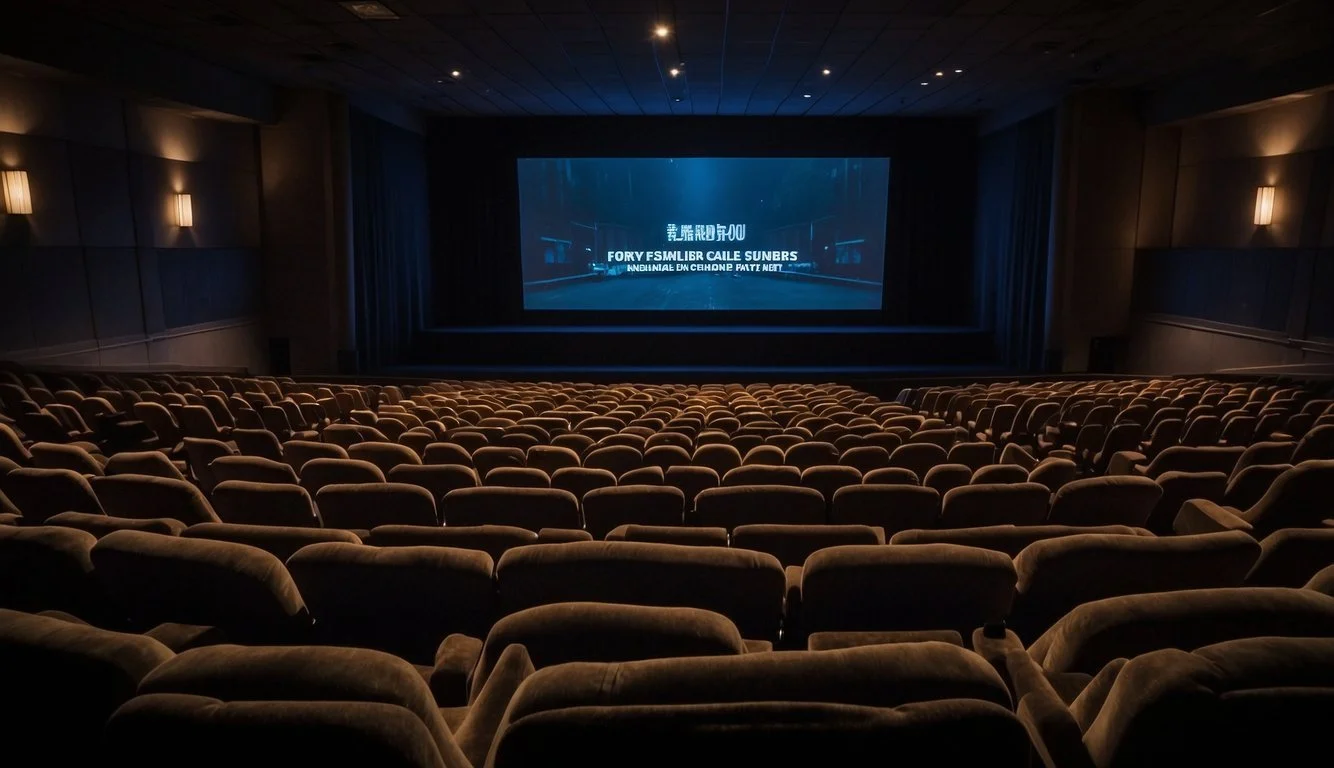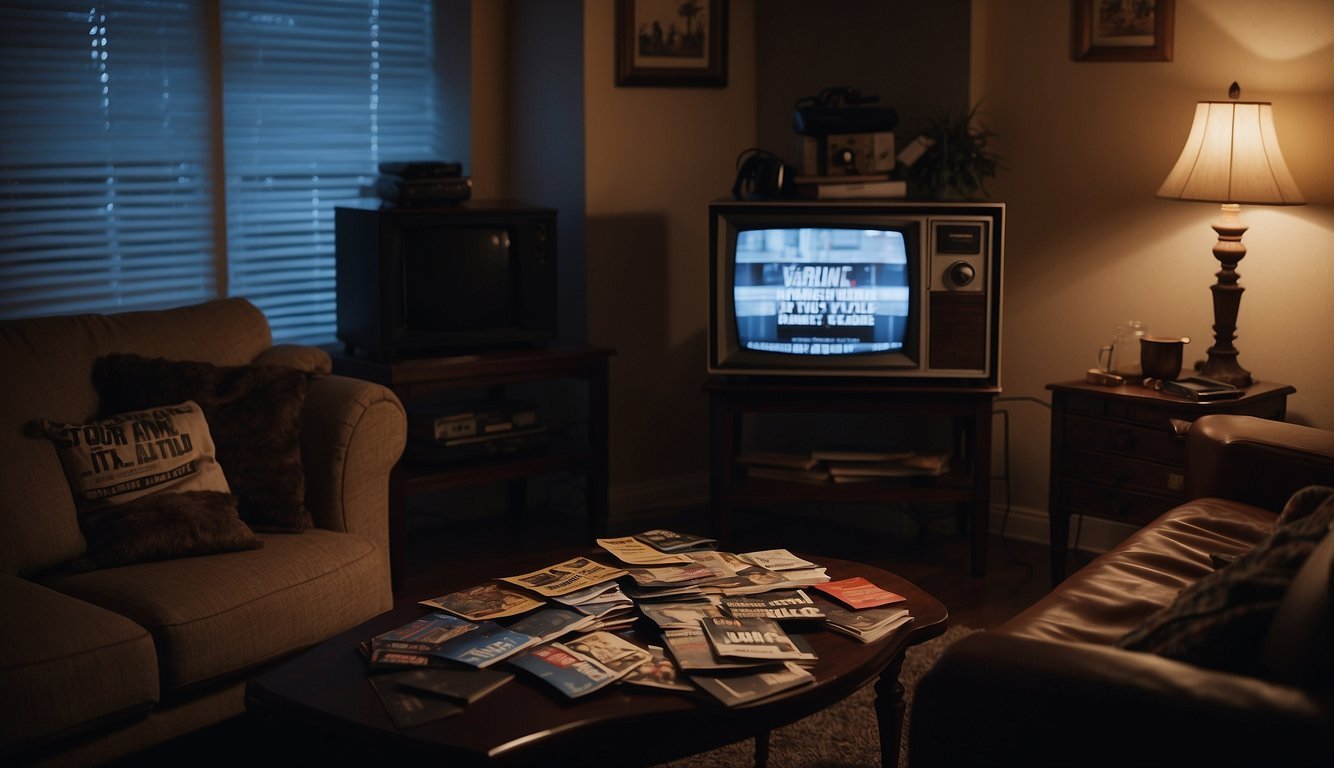Documentary Review: Casting JonBenet (2017)
A Deep Dive into a Tragic Case
Released in 2017, "Casting JonBenét" is a unique documentary directed by Kitty Green that blends fact and fiction to delve into the enigmatic murder of six-year-old JonBenet Ramsey. Rather than following a traditional investigative approach, the film invites a group of actors to audition for the roles of key figures in the case, including JonBenet herself. This method allows the film to explore not only the crime but also the actors’ personal connections and interpretations.
The documentary stands out by providing a platform for these actors to share their own hypotheses, biases, and emotional links to the infamous 1996 case. This innovative approach offers viewers an in-depth look at the social and psychological impacts of the crime on those who attempt to reenact it.
The performances captured on screen reflect a diverse array of perspectives, shedding light on how deeply the case has embedded itself in American cultural consciousness. This makes "Casting JonBenét" a fascinating watch for both true crime aficionados and those interested in the art of storytelling through film.
Background on JonBenet Ramsey Case
JonBenet Ramsey was a six-year-old child beauty queen found murdered in her home in Boulder, Colorado, on December 26, 1996. Her death shocked the nation and remains one of the most high-profile unsolved cases in American history.
The initial report came from her mother, Patsy Ramsey, who discovered a ransom note demanding $118,000. Despite extensive investigations, no conclusive evidence has identified the perpetrator.
JonBenet's body was found in the basement of the family home, eight hours after her father, John Ramsey, called 911. The case garnered massive media attention, with widespread speculation and numerous theories.
Several individuals, including family members and acquaintances, were considered suspects. However, none have been charged, and the case remains open.
Authorities collected substantial evidence, including DNA samples, but these have not led to a definitive answer. The case is marked by a mix of public fascination and frustration over the lack of resolution.
The JonBenet Ramsey case highlights the intense media scrutiny that can accompany high-profile crimes. Public opinion has fluctuated over the years, with different theories emerging as new information is occasionally released.
Investigators have used various modern forensic techniques to re-examine evidence, yet the case continues to puzzle experts and the general public alike.
Overview of 'Casting JonBenet'
"Casting JonBenet" is a unique documentary that blends fact and fiction to explore the infamous 1996 murder case of JonBenet Ramsey. The film employs innovative techniques and various perspectives to present this American tragedy.
Production Details
Directed by Kitty Green, "Casting JonBenet" premiered at the Sundance Film Festival in 2017. The documentary runs for approximately 80 minutes and features a blend of professional and nonprofessional actors. Casting choices include Annie Hamilton and Brian McCulley among others.
The film was acquired by Netflix, reflecting the streaming giant's investment in thought-provoking documentary cinema. Filming took place in Colorado, where the real events occurred, adding an authentic backdrop to the narratives presented by participants.
Creative Approach
"Casting JonBenet" uses a distinctive method by having actors audition for the roles of key figures involved in the case, such as JonBenet, her parents John and Patsy, and others. Their performances reveal their personal interpretations and theories about the murder.
This approach allows the documentary to delve into the cultural impact and public fascination with the case, rather than attempting to solve it. The blend of reenactments and interviews creates a multifaceted portrayal, capturing the complexity and enduring mysteries surrounding the tragic event.
Critical Analysis
"Casting JonBenet" masterfully blends fact and fiction to examine the infamous murder case. This critical analysis explores elements such as narrative structure, documentary techniques, performance and casting, and the director's intent.
Narrative Structure
The documentary takes a non-linear approach, employing a unique method where actors audition for roles resembling real-life individuals involved in the case. This structure deviates from conventional storytelling. Instead of a straightforward recounting of events, viewers experience fragmented yet insightful perspectives.
By incorporating actors' interpretations and personal reflections, the film creates a layered narrative. This approach allows the audience to see various viewpoints and underscores the enduring mystery surrounding JonBenet Ramsey's death.
Documentary Techniques
Director Kitty Green uses a blend of reenactments and interview segments. Actors perform scenes while simultaneously offering insights into their thoughts and feelings about the case. Green avoids typical investigatory techniques and opts for a more experimental style.
The film doesn't rely heavily on archival footage or traditional narration. Instead, it uses the audition process to piece together the narrative. This technique gives the documentary an almost theatrical feel, enhancing its emotional resonance.
Performance and Casting
The casting process itself becomes a focal point. Actors audition for key figures such as John and Patsy Ramsey. Their performances are interwoven with their personal anecdotes and interpretations. This method humanizes the individuals involved.
The varying portrayals of each character expose the complex emotions and biases surrounding the case. The actors' varying levels of professionalism further enrich this analysis, adding layers to the narrative by showcasing different acting approaches.
Director's Intent
Kitty Green aims to dissect the public's obsession with the JonBenet Ramsey case. Her intent is to highlight how media and public scrutiny have shaped perceptions over time. The film questions the nature of truth and memory in high-profile criminal cases.
By choosing to focus on the casting process, Green reveals how collective memory and individual interpretation converge. Her innovative approach compels viewers to reflect on their understanding of the case and the implications of media representation.
Audience Reception
Casting JonBenet generated strong reactions from both the general public and critics. Opinions varied widely, reflecting the film's unconventional approach and emotional subject matter.
Public Reaction
The general audience appreciated the film's innovative format that combines documentary and reenactment. Many found it refreshing compared to traditional documentaries.
Comments on social media and review sites generally praised the film for its thought-provoking nature. Some viewers, however, were uncomfortable with its unorthodox style, feeling it crossed boundaries by blurring the lines between fact and fiction.
Certain segments of the audience felt the film provided a new way to engage with the tragedy, while others believed it did not address the case's details sufficiently.
Critical Reception
Critics gave Casting JonBenet largely positive reviews, with an 81% approval rating on Rotten Tomatoes based on 47 reviews and an average rating of 7.3/10. They appreciated director Kitty Green's unique blend of documentary and reenactment, which set it apart from typical investigative films.
The film was lauded at the Sundance Film Festival, highlighting its distinctive approach to exploring the JonBenet Ramsey case. Reviews from major outlets such as Roger Ebert and The Hollywood Reporter praised the performances and the film's ability to evoke deep emotional responses while addressing complex themes.
Themes and Symbolism
"Casting JonBenet" delves into complex themes surrounding media sensationalism and the blurred lines between truth and fiction in documentary filmmaking. By presenting these elements through the innovative use of actors, the film challenges traditional narrative forms and encourages the audience to reconsider their perceptions of reality.
Representation of Media Sensationalism
Kitty Green's "Casting JonBenet" uses the structure of auditions to critique how the media handles high-profile criminal cases. By having actors audition for roles related to the JonBenet Ramsey case, the film underscores how media shapes and sometimes distorts public perception. The reenactments highlight the sensational nature of media coverage, presenting various interpretations and theories about the case that were popularized in the press.
This approach reveals the constructed nature of media stories, emphasizing how they are designed to captivate an audience rather than present an objective truth. The film's meta-commentary on the media reflects the pervasive influence of sensationalism in shaping public narratives, often prioritizing intrigue over factual accuracy.
Exploration of Truth and Fiction
"Casting JonBenet" blurs the lines between documentary and fiction, enhancing its exploration of truth. The film employs actors to recreate events and speculate on motivations, blending real-life interviews with staged performances. This method questions the authenticity of what is considered factual in documentaries, presenting multiple layers of interpretation.
The use of auditions serves as a poignant metaphor for the elusiveness of truth in the JonBenet Ramsey case. By presenting different versions of the same events, the film acknowledges the subjective nature of memory and perception. It challenges viewers to consider how much of what they believe is influenced by narrative constructions rather than objective facts.
In doing so, the film offers a critical examination of how documentaries can both reveal and obscure the truth, making viewers reflect on the reliability of the information they consume.
Ethical Considerations
The documentary "Casting JonBenet" raises significant ethical questions, particularly regarding its use of real-life events and its impact on the participants involved.
Use of Real-Life Events
"Casting JonBenet" is centered on the tragic murder of JonBenet Ramsey. This event, still unsolved, has been the subject of much public speculation and media coverage. By choosing to base the documentary on such a sensitive and personal tragedy, questions arise about exploitation and sensationalism. The documentary blends fact and fiction, which may blur the line between respectful storytelling and intrusive dramatization.
Director Kitty Green's approach involves actors sharing their personal impressions, which adds another layer of complexity. These portrayals might influence public perception, potentially distorting the facts. The ethical consideration here focuses on whether it is appropriate to recreate and reinterpret such a traumatic event for entertainment or artistic purposes.
Impact on Participants
The participants in "Casting JonBenet" include both professional and non-professional actors. These individuals not only audition for roles but also offer personal insights and emotional responses to the event. This methodology can be seen as a form of psychological engagement that might impact the participants' well-being.
Actors reliving or interpreting traumatic experiences might face emotional distress, making their involvement ethically charged. The documentary’s method raises concerns about informed consent and the extent to which participants fully understand the potential emotional toll. Moreover, ethical filmmaking should consider the long-term effects on those involved, ensuring that their participation is voluntary, fully informed, and respectful of their mental health.
Comparative Context
"Casting JonBenet" stands out in the landscape of true crime documentaries by blending documentary and dramatic reenactment to examine public memory and media representation surrounding the JonBenet Ramsey case. This approach sets it apart from traditional methods in the genre.
Relation to Other True Crime Documentaries
Numerous true crime documentaries focus on presenting evidence, interviewing key figures, and pursuing leads to uncover truths. Films like "Making a Murderer" and "The Jinx" employ investigative journalism to delve deep into their subjects.
In contrast, "Casting JonBenet" uses its unique format to showcase multiple perspectives through actors' interpretations. This technique contrasts significantly with the straightforward, linear narratives seen in many true crime projects, offering viewers a different way of engaging with the material.
Innovation in the Genre
Director Kitty Green’s innovative blend of documentary and staged reenactment in "Casting JonBenet" distinguishes it from its peers. By casting actors to portray real-life figures involved in the case, she layers authentic recollections with performative interpretations, highlighting the complex relationship between memory and fiction.
This method contrasts with traditional documentaries, where authenticity and factual presentation are paramount. Green’s approach not only challenges viewers but also expands the potential of documentary storytelling, introducing a new method for exploring well-known events. This innovation has opened discussions about how true crime stories are told and the role of the audience in interpreting them.
Conclusion
"Casting JonBenet" stands as a bold experiment in documentary filmmaking. Director Kitty Green skillfully merges fact with fiction, offering a unique exploration of a well-known case.
The film does not follow the traditional path of true crime documentaries. Instead, it delves into the perspectives of actors auditioning for roles related to the JonBenet Ramsey case.
Each actor brings a personal touch, offering insight into how the case has permeated public consciousness. This method results in a layered narrative, revealing biases and personal connections.
The film's structure effectively questions the nature of performance and truth in storytelling. It highlights the blurred line between reality and portrayal, a fitting choice for a story that has seen much speculation and media frenzy.
Pros:
Innovative format
Insightful character portrayals
Engaging narrative approach
Cons:
May lack traditional investigative depth
Unconventional style may not appeal to all viewers
By focusing on individual interpretations and experiences, "Casting JonBenet" offers a fresh perspective on a heavily covered topic. It challenges viewers to reconsider their assumptions about the case and the documentary genre itself.








